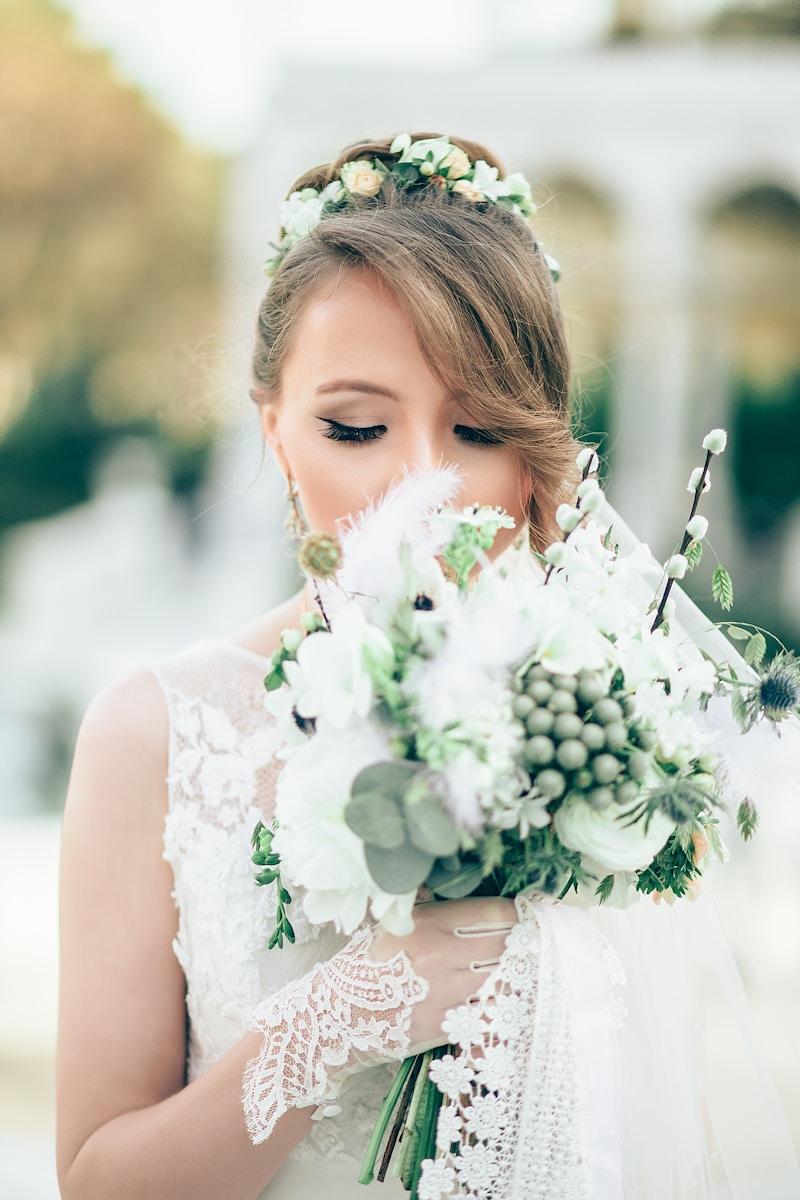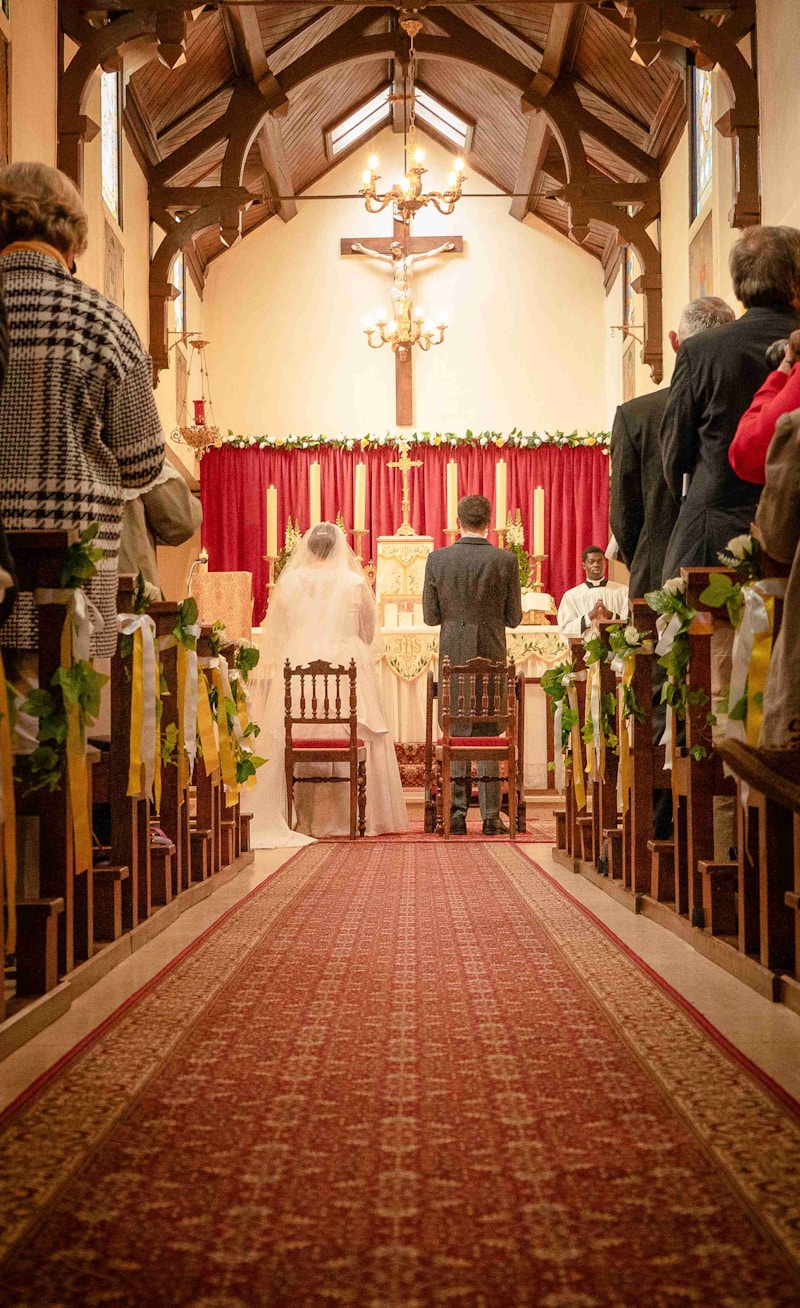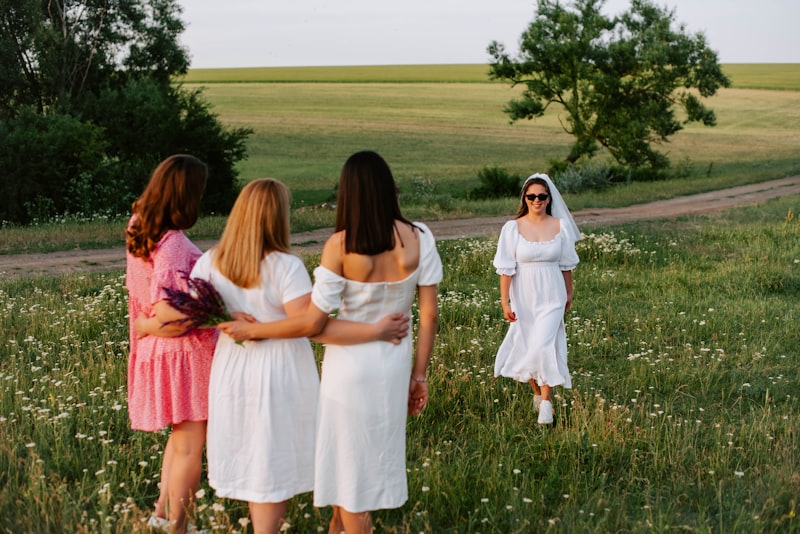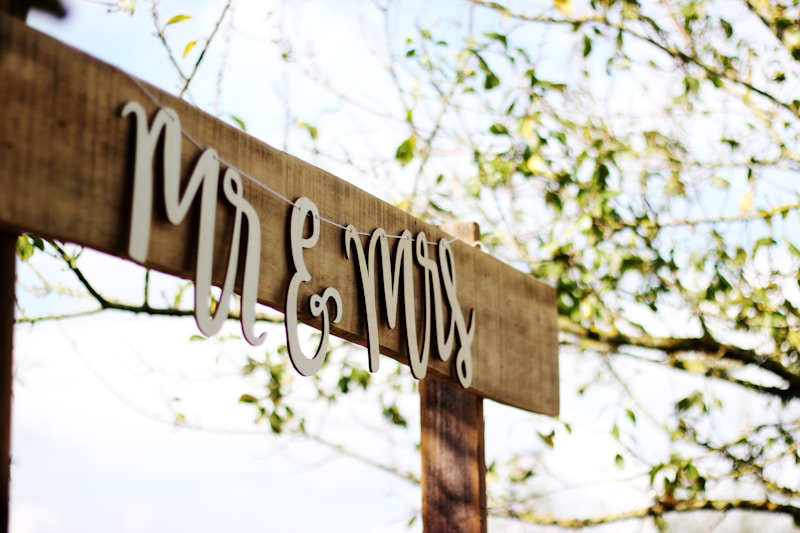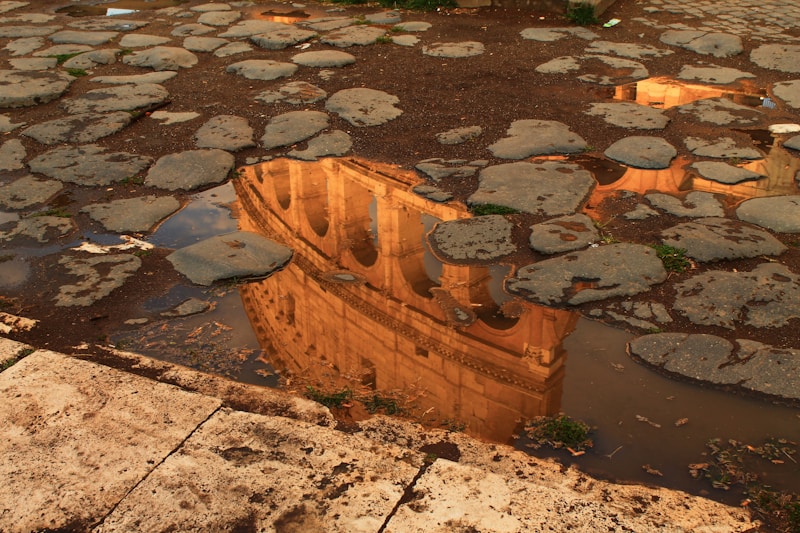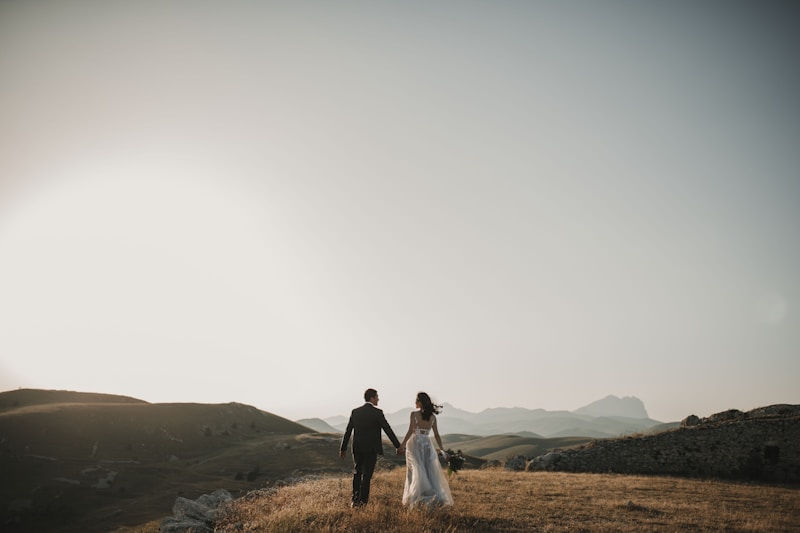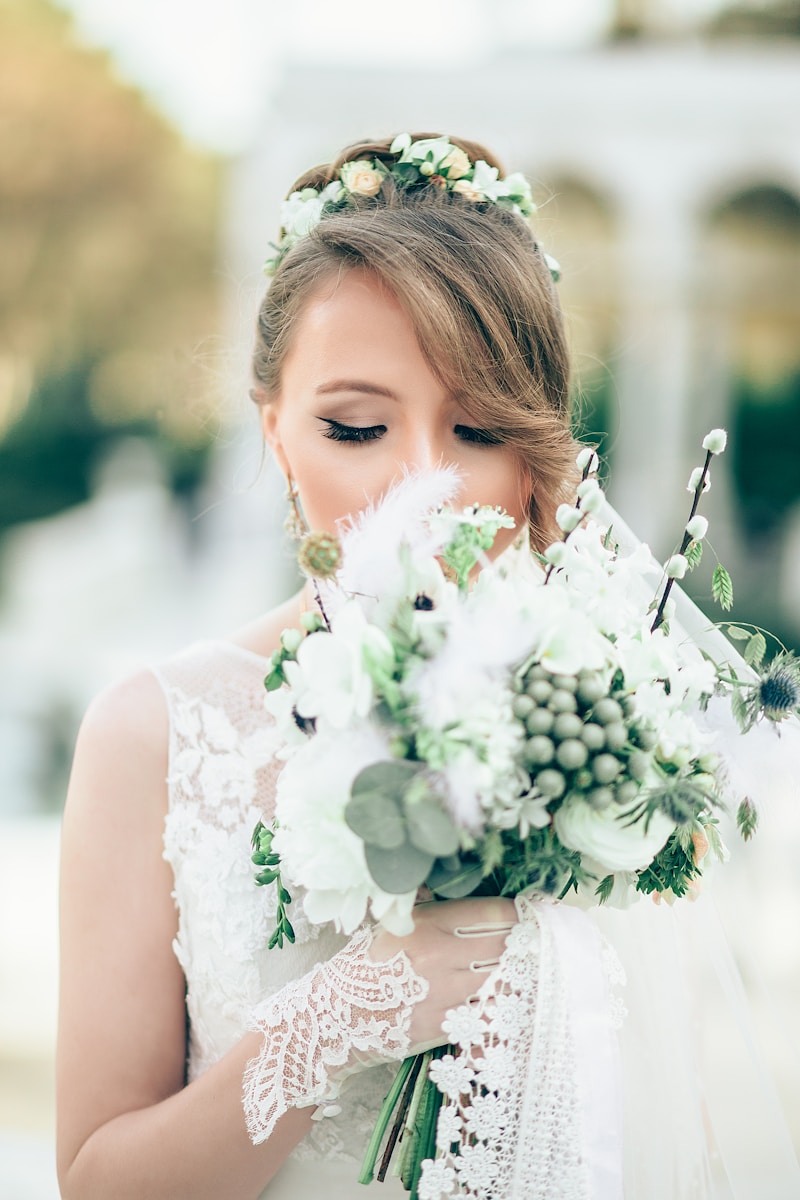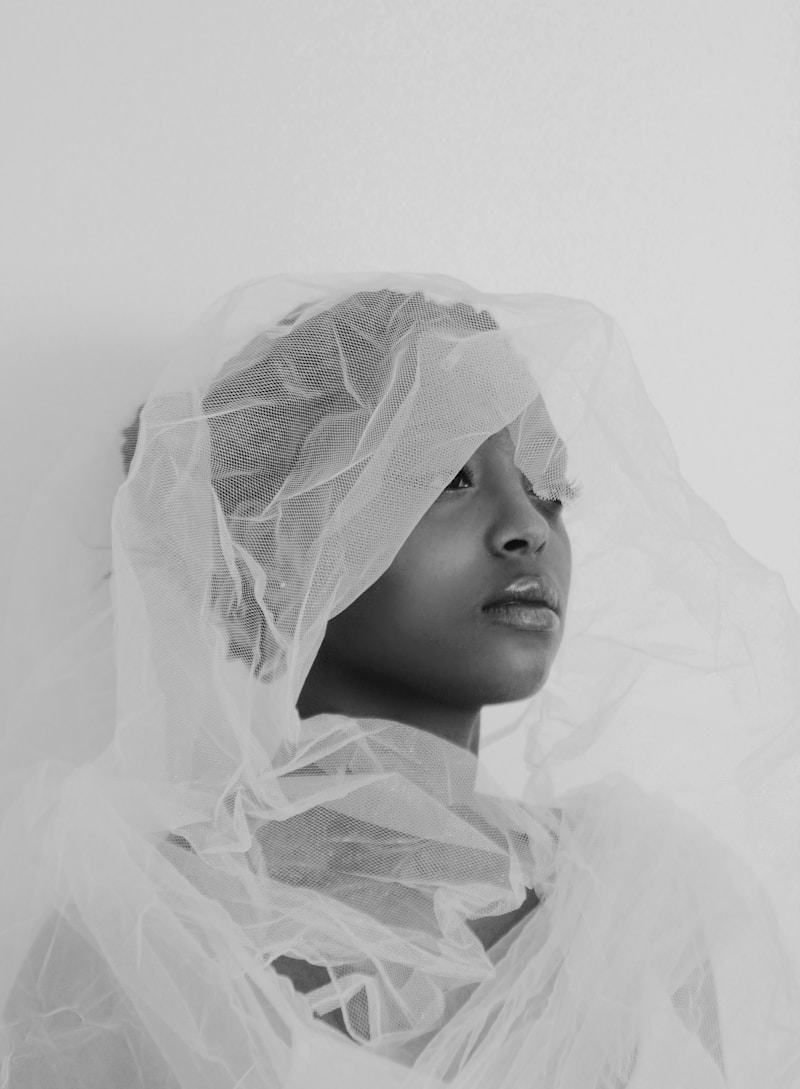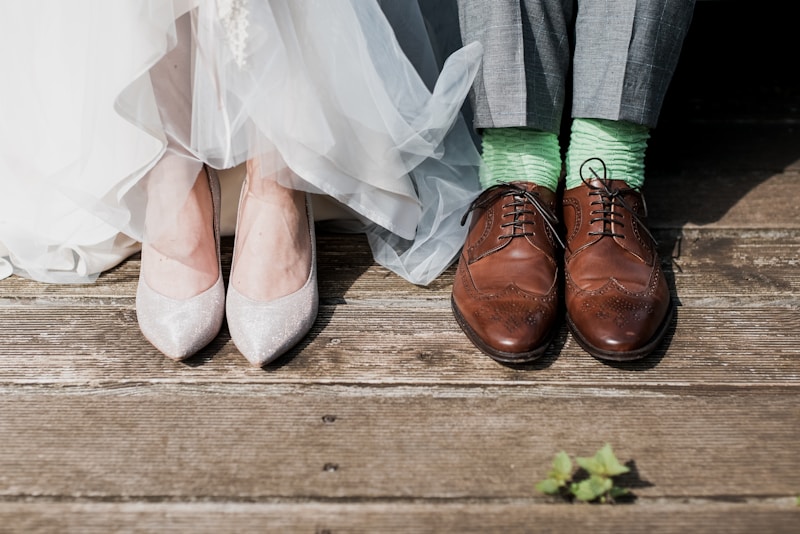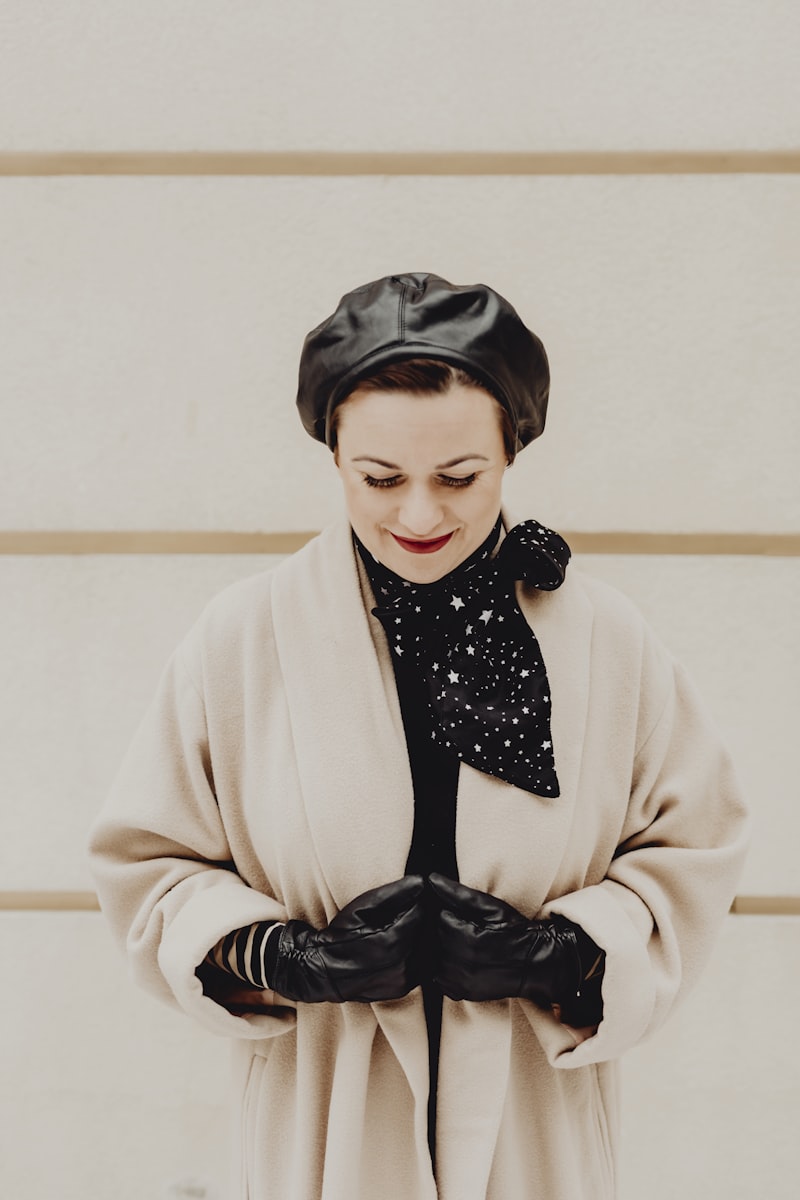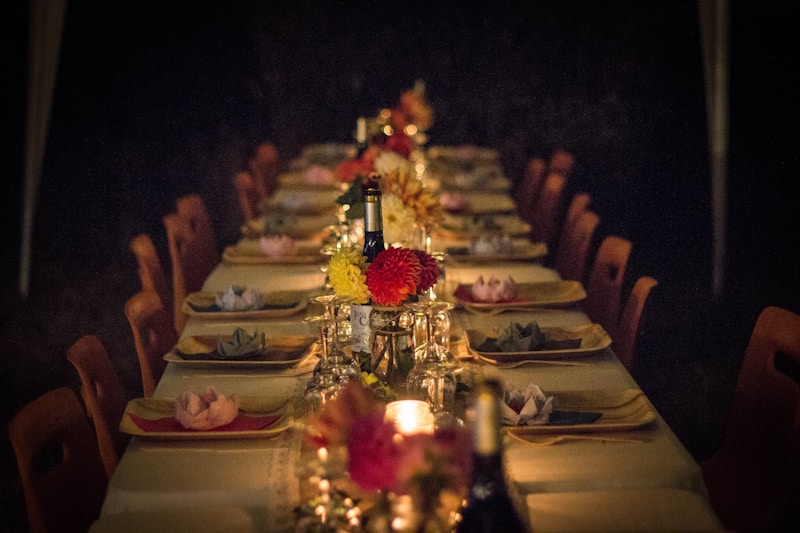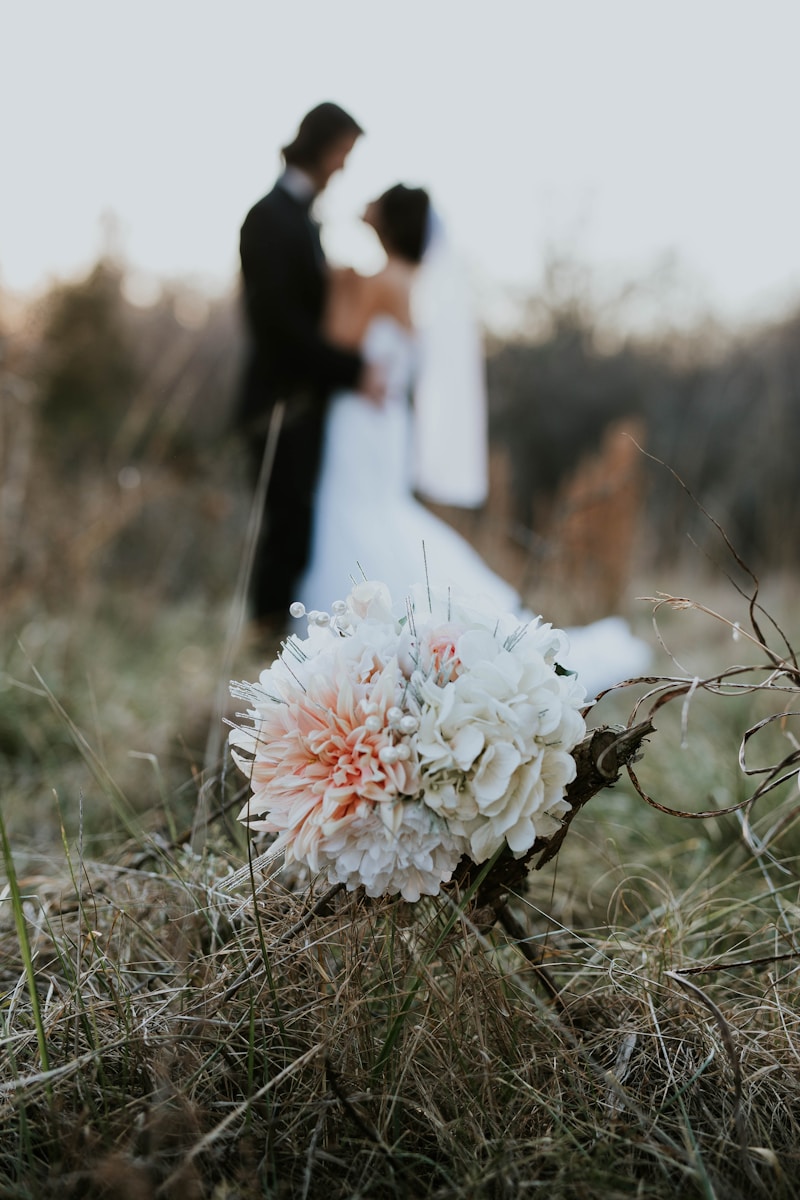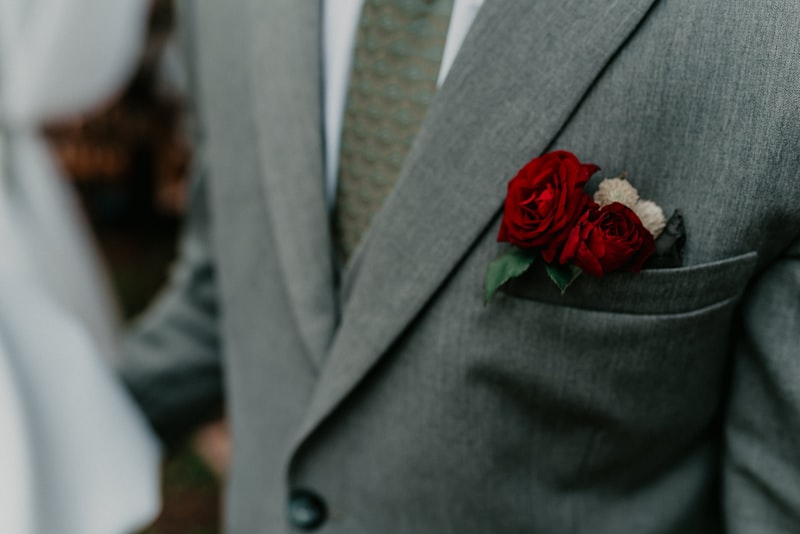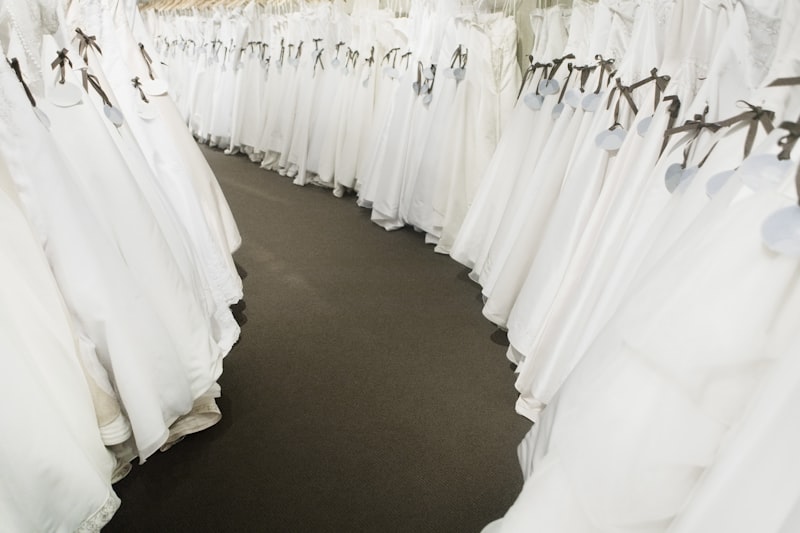Understanding Social Media's Impact on Bridal Trends
In today's digital age, social media has taken the world by storm, affecting various aspects of our lives, including wedding planning. The bridal industry has transformed significantly due to the influence of platforms like Instagram, Pinterest, and TikTok. This article explores how social media shapes bridal trends, what couples are looking for, and some tips for both brides and wedding planners to leverage these trends wisely.The Rise of Social Media in Wedding PlanningSocial media has become an essential tool for couples planning their weddings. With instant access to countless ideas and inspiration, platforms like Instagram and Pinterest allow users to visualize their dream wedding. Weddings that were once personal, intimate affairs now have the potential to reach masses, thanks to the shareability of social media content.Harnessing the Power of VisualsImages play a crucial role in the wedding planning process. Social media platforms prioritize visual content, enabling couples to discover unique styles, themes, and venues that resonate with their vision. Influencers and wedding vendors often showcase their expertise through striking photography that can inspire brides-to-be.Key Bridal Trends Influenced by Social MediaAs social media continues to evolve, certain trends have emerged that couples commonly gravitate towards:TrendDescriptionMicro WeddingsA more intimate gathering with close family and friends, often influenced by the pandemic.Unique VenuesBrides are opting for...
Sustainable Luxury in Contemporary Weddings: Redefining Elegance
Introduction to Sustainable Luxury in WeddingsIn recent years, the concept of sustainable luxury has gained significant traction, particularly in the realm of weddings. As couples become more environmentally conscious, they seek ways to integrate sustainability into their special day without compromising on elegance or style. This article delves into the many facets of sustainable luxury in contemporary weddings, exploring trends, ideas, and practical tips for those planning their nuptials.Understanding Sustainable LuxurySustainable luxury combines high-end aesthetics and eco-friendly practices, focusing on quality over quantity. Luxury in this context does not only refer to extravagant spending; it is about making informed choices that contribute to the well-being of the planet. Let’s examine some core principles of sustainable luxury: Quality over Quantity: Opting for fewer, high-quality items rather than numerous lower-quality ones. Eco-friendly Practices: Incorporating environmentally friendly choices in planning and execution. Local Sourcing: Supporting local businesses and artisans to reduce carbon footprints.Trends in Sustainable Luxury WeddingsThe current trends in sustainable luxury weddings reflect a shift towards thoughtful designs and ethical practices. Here are some popular trends that couples are embracing:TrendDescriptionEco-friendly VenuesChoosing venues that utilize renewable resources, such as solar energy or sustainable landscaping.Zero-Waste Plann...
The Role of Religion in Bridal Couture: A Harmonious Blend of Tradition and Fashion
Bridal couture is a dazzling world where fashion meets tradition, and one of the most influential factors in this realm is religion. As brides prepare for their big day, the garments they choose often reflect not only personal style but also cultural and religious beliefs. This article delves into the pivotal role religion plays in bridal couture, illustrating how it shapes design elements, fabrics, and even colors, creating a unique narrative for each bride.Understanding Bridal CoutureBridal couture refers to the custom-made wedding gowns designed specifically for brides. This high-fashion segment combines artistry and exceptional craftsmanship to create garments that can be both stunning and deeply personal. In many cultures, the wedding dress is not just a piece of clothing; it symbolizes love, commitment, and a binding of families. When intertwined with religion, the design often carries significant meanings.The Religious Influence on Bridal CoutureThe impact of religion on bridal couture can be observed across various traditions worldwide. Each religion has specific customs that dictate aspects like attire, colors, and even the style of the dress. Below, we explore how different religions influence bridal couture:ReligionInfluence on Bridal CoutureChristianityTraditionally, white dresses symbolize purity, influenced by Queen Victoria's wedding in 1840.IslamBrides often wear elaborate dresses in bright colors, decorative embroidery, and accessories reflecting cultural her...
Rituals and Attire: The Cultural Significance of Bridal Wear
Understanding the Rituals and Attire in Bridal WearBridal wear is not just a piece of clothing; it embodies deep cultural significance and traditions that have evolved over generations. Across various cultures, the rituals associated with bridal wear highlight the importance of love, unity, and heritage. In this article, we will explore the intricate relationship between rituals and attire, delving into the cultural significance of bridal wear around the world.The Historical Context of Bridal WearBridal wear has a rich history that dates back centuries, with each culture presenting its unique attire that signifies various rituals. For example, in Western cultures, the white wedding dress symbolizes purity and new beginnings, a tradition popularized by Queen Victoria in the 19th century. Conversely, traditional Indian bridal wear often includes vibrant colors like red, symbolizing prosperity and fertility.Bridal Wear Across Different CulturesThe diversity in bridal wear around the world reflects the rich tapestry of cultural traditions. Here's a brief overview of how bridal attire varies across cultures:CultureBridal AttireCultural SignificanceWesternWhite wedding dressSymbolizes purity and new beginningsIndianRed saree or lehengaRepresents prosperity and fertilityChineseRed qipao or cheongsamSignifies good fortune and happinessAfricanColorful kente cloth or geleCelebrates heritage and communityThe Rituals Associated with Bridal WearRituals are integral to the significance of ...
Cultural Significance of Wedding Attire: A Global Perspective
In many cultures around the world, wedding attire holds a deep and symbolic meaning. It reflects not just personal taste, but also social status, cultural heritage, and values. From vibrant saris in India to sleek tuxedos in the West, each outfit tells a story. In this article, we will explore the cultural significance of wedding attire across different nations, how traditions shape the choice of garments, and the intricate details involved in these important ceremonies.The Role of Wedding Attire in Various CulturesWedding attire varies significantly around the globe, with each culture putting a unique spin on what the bride and groom should wear. Understanding these differences can enrich our understanding of weddings themselves. Below, we explore some notable examples.RegionAttireSignificanceIndiaSari for brides, Sherwani for groomsSymbolizes tradition, family values, and cultural heritageChinaQipao or CheongsamRepresents luck, prosperity, and happinessJapanKimonoA reflection of elegance, respect, and harmonyWestern CountriesWhite wedding gown, tuxedoThe symbolism of purity and commitmentMiddle EastElaborate gowns with gold embroideryDenotes wealth, generosity, and social statusIndia: A Collision of TraditionsIn India, wedding attire is deeply intertwined with the region's rich history and multiple cultures. Brides often wear a sari, which is a long piece of cloth that can be draped in various styles. The choice of color, embroidery, and fabric carries significant meaning, ...
Transformation of Wedding Attire Over Time: From Tradition to Modernity
Understanding the Evolution of Wedding AttireWeddings are some of life's most significant events, often steeped in tradition and cultural significance. Over the years, wedding attire has transformed dramatically, reflecting societal changes, fashion trends, and individual preferences. In this article, we will explore the transformation of wedding attire over time, highlighting key changes from historical styles to contemporary choices, and offer insights into what these changes mean for couples today.Historical Overview of Wedding AttireTo fully appreciate the current trends in wedding attire, it is important to understand how it has evolved over the years. Wedding fashions can differ vastly based on cultural and regional influences. Below, we outline significant periods in the history of wedding attire.Time PeriodStyleFeaturesAncient TimesSimple and PracticalNatural fabrics, limited embellishmentsMiddle AgesLuxurious GownsRich fabrics, long trains, and veilsVictorian EraWhite Wedding DressIntroduction of white as a symbol of purity, elaborate designs20th CenturyVariety of StylesFlapper dresses to princess gowns; more diverse options21st CenturyPersonalized ChoicesCultural influences, eco-friendly materials, and non-traditional designsThe Influence of Culture on Wedding AttireCultural traditions are closely tied to wedding attire. Around the world, different cultures celebrate weddings with unique clothing styles. Here are some prominent examples:Indian Weddings: Traditional ...
The Role of Monuments in Bridal Traditions: A Historical Perspective
Understanding the Significance of Monuments in Bridal CeremoniesBridal traditions vary immensely across cultures, often enriched by historical monuments that hold great significance. These structures not only symbolize the cultural heritage of a community but also serve as backdrops for some of life’s most critical celebrations. In this article, we will delve into the role of monuments in bridal traditions, exploring how different cultures integrate historical sites into their nuptial rites, and examining the deeper meanings behind these practices.What are Monuments and Their Cultural Significance?Monuments are structures that are erected for commemorative purposes. They can be anything from grand buildings and religious sites to smaller, lesser-known structures. Monuments often represent ideals, commemorate historical events, or honor significant figures within a culture. In the context of bridal traditions, they serve as powerful symbols of cultural identity and continuity.The Historical Context of Bridal MonumentsThroughout history, weddings have been celebrated as pivotal life events, often marked by specific locations that hold cultural significance. For example, in many Asian cultures, temples serve as sacred spaces where couples seek blessings. In Europe, castles and palaces are often the chosen venues for royal weddings, reflecting the grandeur associated with marriage among nobility. Here is a quick summary of notable cultural practices:RegionCommon MonumentsSignific...
Notable Bridal Fashion Icons in History: A Journey Through Time
Bridal fashion has evolved over the years, reflecting cultural shifts, societal changes, and personal styles. Each era has seen the emergence of fashion icons who have left an indelible mark on wedding attire, inspiring countless brides around the world. In this article, we will explore some of the most notable bridal fashion icons in history, examining their contributions to bridal style and the lasting influence they have had on contemporary bridal fashion.The Evolution of Bridal FashionUnderstanding bridal fashion icons requires a journey back in time. The history of wedding dresses is a blend of tradition and personal expression. From the opulent gowns of royalty to the simple, elegant styles favored by modern brides, wedding fashion has seen it all. Let's take a closer look at some of the defining moments in bridal fashion history.The Beginning: Ancient TraditionsBridal attire has been fashioned since ancient civilizations. In ancient Rome, brides wore a tunic called a "tunica recta," symbolizing purity and simplicity. Similarly, in ancient cultures around the world, brides often wore vibrant colors and intricate designs that reflected their cultural heritage.The Victorian Era: Queen Victoria's ImpactOne of the pivotal moments in bridal fashion history came when Queen Victoria married Prince Albert in 1840. The young queen chose to wear a white gown made of silk satin, a stark contrast to the colorful dresses typically worn by brides at the time. This decision popularize...
Brides Across Cultures and Their Styles: A Global Celebration of Love
Weddings are a universal celebration of love, yet they are also distinct in every culture. The bride, often the focal point of any wedding ceremony, embodies the traditions, values, and aesthetics unique to her culture. In this article, we will explore various bridal styles from around the world, appreciating the rich diversity that shapes our understanding of beauty and togetherness in marriage.The Significance of Bridal Attire in Different CulturesBridal attire often carries significant cultural symbolism. For many, it is more than just a dress; it represents heritage, familial legacy, and individual expression. Understanding these cultural significances enhances not only the appreciation of the attire but also the wedding as a whole.Asian Bridal TraditionsIn countries like India and China, bridal wear is steeped in tradition.CountryTypical Bridal AttireSymbolismIndiaSaree or LehengaProsperity and fertilityChinaQipao or Red DressGood fortune and joyIn India, brides often wear a vibrant red lehenga adorned with gold embroidery, symbolizing prosperity and fertility. In contrast, Chinese brides traditionally wear a red qipao, a color that signifies good fortune.Chinese wedding dressEuropean Bridal StylesIn Europe, bridal styles showcase a blend of royal influences and modern trends.For instance, in the UK, the white wedding dress became a trend after Queen Victoria wore one in 1840. It symbolizes purity and is often accompanied by a veil. Conversely, in Greece, brides may wear...
Revamping Classic Bridal Gowns: A Modern Twist on Timeless Elegance
Bridal fashion is an ever-evolving industry, with trends coming and going with the seasons. However, classic bridal gowns have remained a beloved choice for brides around the world. What if you could breathe new life into these timeless pieces? In this article, we will explore how to revamp classic bridal gowns, creating a fresh but elegant look for today's modern bride. Understanding the Classic Bridal Gown Classic bridal gowns typically feature traditional elements like lace, satin, and A-line silhouettes. They often have long trains and elegant embellishments. These features are deeply embedded in bridal culture, symbolizing purity and elegance. But as fashion evolves, so do the tastes and preferences of brides. Revamping these gowns involves blending classic designs with contemporary elements, thereby creating an aesthetic that resonates with both tradition and modernity. Why Revamp Classic Bridal Gowns? Revamping classic bridal gowns allows brides to express their uniqueness while still honoring tradition. Here are several reasons brides might consider revamping: Personalization: Customizing a gown ensures that the bride’s personality shines through. Sustainability: Revamping helps reduce waste in the fashion industry by making use of existing materials. Cost-effectiveness: Modifying an existing gown is often less expensive than purchasing a new one. Key Elements of Revamping When revamping a classic bridal gown, focus on these key elements: ...
Cultural Fusion in Wedding Dresses: A Trend That Celebrates Diversity
Understanding Cultural Fusion in Wedding DressesWeddings are a beautiful representation of love, commitment, and the coming together of two families. In recent years, a fascinating trend has emerged in the world of bridal fashion: cultural fusion in wedding dresses. This trend blends elements from various cultures, allowing couples to express their unique identities and backgrounds on their special day. In this article, we will explore the significance of cultural fusion in wedding dresses, its evolution, and how you can incorporate this trend into your wedding. We will also answer some frequently asked questions related to this fascinating topic.The Significance of Cultural Fusion in Wedding DressesWhen we think about weddings, we often envision traditional white gowns and tuxedos. However, cultural fusion highlights the importance of embracing diversity and blending different traditions. This practice not only honors the couple’s heritage but also signifies their commitment to building a life together that respects and celebrates their cultural backgrounds.Employing cultural fusion in wedding dresses allows couples to break free from conventional norms and create a distinctive style that reflects their personalities. This trend is particularly significant in multicultural marriages, where partners may want to pay homage to their family's traditions while creating new ones. Additionally, it promotes inclusivity, showcasing the beauty of diversity within the bridal industry.T...
Sophisticated Twists on Vintage Styles: Elevate Your Fashion Game
Embracing Vintage Styles with a Modern FlairThe world of fashion is perpetually evolving, yet the charm of vintage styles continues to captivate fashion enthusiasts everywhere. Sophisticated twists on vintage styles allow individuals to honor the exquisite craftsmanship of the past while infusing contemporary elements. This article delves into how to blend vintage aesthetics with modern techniques, showcasing important style tips, insights into popular items, and a comprehensive look at how to achieve this look effortlessly.The Allure of Vintage StylesVintage styles refer to fashion items that celebrate eras gone by, often characterized by distinctive silhouettes, patterns, and craftsmanship. Whether it’s a flapper dress from the 1920s or a mod mini skirt from the 1960s, these styles recount stories of their time. However, the key to keeping vintage fashion relevant today is to incorporate sophisticated twists.Key Elements of Vintage FashionBefore exploring modern interpretations, it's essential to understand what makes vintage styles iconic. Here are several elements that define vintage fashion: Unique Patterns: Floral prints, polka dots, and geometric designs Diverse Fabrics: Lace, chiffon, tweed, and velvet Iconic Silhouettes: A-line skirts, high-waisted trousers, and fitted bodices Classic Accessories: Pearls, brooches, and vintage handbagsIntroducing Sophisticated TwistsTo effectively blend vintage styles with modern fashion, consider these sophisticated twis...
Embracing Individuality in Wedding Dresses: A Guide to Unique Bridal Styles
IntroductionWhen it comes to weddings, one of the most anticipated elements is undoubtedly the wedding dress. This iconic garment symbolizes love and new beginnings, yet it can also be a significant expression of oneself. Embracing individuality in wedding dresses allows brides to step beyond traditional boundaries and showcase their unique personalities. Today, we'll explore the different styles, fabrics, colors, and trends that encourage brides to express their individuality on their special day.The Importance of IndividualityEach bride is unique, and her wedding dress should reflect that. Choosing a wedding dress is not just about aesthetics; it’s a personal journey that encapsulates her style, culture, and personality. Embracing individuality in wedding dresses means opting for designs that tell a story and align with personal values. This touches on several related keywords such as personalized wedding dresses, unique bridal styles, and custom wedding gowns.1. Defining Your StyleThe first step in embracing individuality in wedding dresses is understanding and defining your personal style. Are you a classic bride, a bohemian spirit, or a modern minimalist? Taking the time to identify what resonates with you can significantly influence your dress choice. Here are some styles to consider:Classic: Timeless silhouettes, lace details, and traditional fabrics.Bohemian: Free-spirited looks with flowing fabrics and intricate patterns.Modern: Clean lines, unique cuts, and adventur...
Understanding Societal Influences on Bridal Designs: A Comprehensive Analysis
Bridal designs continuously evolve, reflecting the dynamic interplay of societal influences. In this article, we will explore the various factors that shape bridal fashion, including culture, economy, and social trends. We will also examine how modern bridal attire incorporates these influences, providing a richly detailed overview of this fascinating subject. The Effect of Culture on Bridal DesignsCultural heritage deeply impacts traditional bridal designs. Different regions and cultures have distinct styles and customs that dictate the choice of materials, colors, and overall design of wedding attire. For example, in Western cultures, white has become the quintessential bridal color, symbolizing purity and new beginnings. This trend was popularized by Queen Victoria in the 19th century and has persisted. Conversely, in many Eastern cultures, red is favored, symbolizing good fortune and joy.Regional VariationsRegionCommon ColorsTypical StylesUnited StatesWhite, IvoryA-Line, Ball GownIndiaRed, GoldSaree, LehengaChinaRed, GoldQipao, CheongsamMexicoWhite, Bright ColorsTraditional DressesUnderstanding these regional variations allows designers to create authentic and representative bridal collections that resonate with the target audience and pay homage to cultural traditions.Economic Factors Affecting Bridal StylesThe economic landscape plays a crucial role in shaping bridal designs. As disposable income fluctuates, so do the choices brides make regarding their wedding attire. ...
Exploring Bridal Aesthetics and Cultural Identity: A Journey Through Traditions and Modernity
Understanding Bridal Aesthetics in Different CulturesBridal aesthetics are not just about the visual appeal of a wedding; they represent cultural identity, traditions, and the rich narratives woven into each society. The attire, makeup, and overall presentation of a bride can tell a story of both personal identity and cultural heritage.The Significance of Bridal AestheticsBridal aesthetics encompass a wide range of elements including wedding attire, accessories, makeup, and even hairstyling. These aspects are critical as they reflect not only the bride's personal style but also the cultural heritage of her community. Understanding these elements can provide deeper insight into the significance behind bridal styles around the world.Table: Various Bridal Aesthetics Around the World Culture Typical Bridal Attire Common Accessories Makeup Styles Indian Saree or Lehenga Jewelry, Bindis Bold Colors, Traditional Styles Chinese Qipao or Red Wedding Dress Hairpins, Jewelry Red and Gold Tones, Natural Look Western White Wedding Dress Veils, Bouquets Subtle Makeup, Neutral Colors African Colorful Traditional Garments Head Wraps, Beads Vibrant Colors, Decorative PatternsThe Role of Cultural Identity in Bridal AestheticsCultural identity plays a pivotal role in shaping the aesthetics of bridal attire. Each culture has unique customs and symbols that translate into the wedding day. For instance, in India, the vibrant colors and in...
Exploring the Powerful Influence of Social Media on Bridal Trends
IntroductionIn today's digital age, the role of social media in shaping various aspects of culture and consumer behavior cannot be overstated. One area where this influence is particularly profound is in the bridal industry. Social media platforms such as Instagram, Pinterest, and TikTok have become treasure troves of inspiration for brides-to-be. In this article, we will delve into social media’s impact on bridal trends, how it has revolutionized the way brides plan their weddings, and what this means for the future of the bridal industry.The Rise of Social Media in Wedding PlanningTraditionally, brides relied on bridal magazines, wedding fairs, and recommendations from friends and family to plan their big day. However, with the advent of social media, the landscape has changed dramatically. Today, brides can access a wealth of information, ideas, and inspiration at their fingertips.Pinterest: The Inspiration Board for BridesPinterest has become synonymous with wedding planning. This visual platform allows users to create boards filled with images that inspire them. Brides-to-be often browse Pinterest for ideas on everything from wedding dresses to flower arrangements and venue decor. The platform’s algorithm also suggests similar content based on user interests, making it easier than ever to curate the perfect wedding vision.Instagram: The Visual Playground for Bridal TrendsInstagram has transformed the way brides envision their weddings. With its focus on visuals, the plat...
Exploring the Impact of Pop Culture on Wedding Attire Choices: A Comprehensive Guide
IntroductionWedding attire choices have always been influenced by various factors, from traditional practices to personal preferences. However, in today's world, the influence of pop culture cannot be ignored. From celebrity weddings to viral fashion trends on social media, pop culture plays a significant role in shaping how couples choose to dress on their big day. In this article, we will explore the impact of pop culture on wedding attire choices, examining how it influences trends, preferences, and overall decisions. We will also provide insights, tips, and recommendations for couples looking to navigate this evolving fashion landscape.The Rise of Pop Culture in Wedding FashionIn recent years, the intersection of pop culture and wedding fashion has become more prevalent. The rise of social media platforms like Instagram and Pinterest has allowed couples to explore a vast array of styles that were once limited to magazines or bridal shops. Here are some key influences:Celebrity WeddingsFrom royal weddings to Hollywood stars, celebrity weddings often set the tone for wedding attire. Couples tend to emulate the styles worn by famous personalities, hoping to incorporate a touch of glamour into their celebrations. For instance, Meghan Markle's timeless Givenchy wedding dress has inspired numerous brides, leading to an increase in requests for minimalist, elegant designs.Trendsetting Television ShowsTelevision shows such as "Say Yes to the Dress" and "Bridgerton" have also sign...
Evolving Perceptions of Beauty in Bridal Fashion: A New Era of Elegance
The Transformation of Bridal FashionIn recent years, the world of bridal fashion has witnessed a remarkable evolution. The traditional notions of beauty that once dominated the industry are rapidly changing, leading to a diverse array of styles, cuts, and designs that cater to a broader audience. Understanding these evolving perceptions can enlighten brides-to-be, designers, and fashion enthusiasts alike.Historical Context: The Roots of Bridal Beauty StandardsBridal fashion has a rich history that reflects societal values and beauty standards over the years. In the early 20th century, bride's gowns were predominantly white, symbolizing purity and innocence. As the decades progressed, styles began to vary significantly, reflecting the changing roles of women in society. The vintage-inspired bridal looks of the 1920s and 1930s, characterized by lace, embroidery, and elegant silhouettes, became popular among brides looking to embrace a more liberated identity.The Influences of Pop Culture and CelebritiesCelebrity influence plays a significant role in shaping contemporary bridal fashion. Icons such as Princess Diana and celebrities like Kim Kardashian have set trends that many brides aspire to emulate. The wedding of Prince Harry and Meghan Markle showcased a modern take on tradition, combining classic elements with a contemporary flare that resonated with many. This intersection of high fashion and royal flair has contributed to evolving perceptions of beauty in bridal fashion.B...
Exploring Traditional Fabrics Used in Bridal Dresses: A Timeless Approach to Elegance
Introduction to Traditional Fabrics in Bridal WearWhen it comes to bridal fashion, the choice of fabric plays a crucial role in defining the overall aesthetic and feel of the wedding dress. Traditional fabrics used in bridal dresses have a rich history and signify cultural heritage. From luxurious silks to intricate laces, each fabric carries its own story and significance. In this article, we will explore the most commonly used traditional fabrics, their origins, and how they contribute to creating stunning bridal gowns.1. The Importance of Traditional Fabrics in WeddingsBrides often choose traditional fabrics not only for their beauty but also for what they represent. These fabrics can embody cultural values, family traditions, and personal stories. The choice of material can reflect the bride's heritage as well as her personal taste, making it a critical aspect of wedding attire.2. Common Traditional Fabrics Used in Bridal DressesFabricDescriptionOriginSilkRenowned for its smooth texture and luxurious sheen, silk offers an elegant drape.Asia, particularly China and IndiaLaceA delicate fabric with intricate patterns, lace adds a touch of grace and femininity.Europe, especially France and BelgiumSatinCharacterized by its glossy surface and soft feel, satin is beloved for its sophisticated look.Various, but popularized in EuropeOrganzaA thin, lightweight fabric, organza is often layered to create volume.ChinaTaffetaKnown for its crisp texture and rich colors, taffeta holds sh...
Exploring the First Documented Bridal Outfits: A Journey Through Time
Introduction to Bridal Fashion HistoryBridal fashion has always held a special place in cultural traditions around the world. While many modern brides today choose gowns that reflect personal style, the origins of bridal attire have deep historical roots. This article delves into the First Documented Bridal Outfits, tracing their evolution through time and across different cultures.The Significance of Bridal OutfitsBridal outfits are not merely garments; they symbolize love, commitment, and the union of two individuals. Historically, wedding attire served various purposes, from representing social status to conforming to cultural or religious norms. Understanding the First Documented Bridal Outfits provides insight into how these traditions evolved into what we see today.Ancient Attire: The Origins of Bridal FashionBridal outfits can be traced back to ancient civilizations. For example, in ancient Egypt, brides typically wore simple white linen dresses, which symbolized purity. In contrast, Roman brides adorned themselves with brightly colored garments, often red, which symbolized fertility.Archaeological findings suggest that the first documented bridal outfits can be dated back to around 4,000 B.C. Let’s take a look at such outfits from various cultures in the table below:CultureBridal Outfit DescriptionTime PeriodAncient EgyptWhite linen dresses symbolizing purity4,000 B.C.Ancient RomeBrightly colored dresses, usually red, representing fertility1st Century A.D.Medieval Eur...

